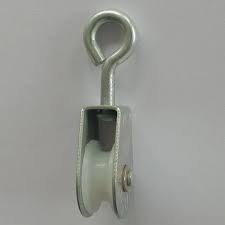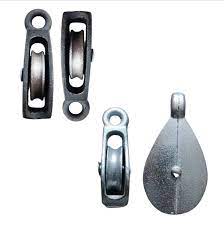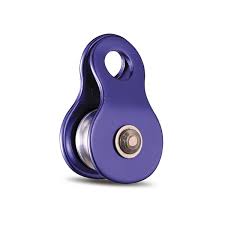Product Description
Wire Rope Pulling Hoist / Cable Winch / Wire Rope WInch
wire rope winch(wire rope pulling hoist ) is an extremely versatile and portable unit for pulling, lifting, lowering and securing loads, that is both easy and safe to operate.
All hoists are supplied complete with 20m wire rope and an extendable operating lever. Wire rope is tapered 1 end and fitted with a hook and safety catch at the other end. The hoist has low maintenance requirements ans is easy to service.
Overload protection ensures high personal safety when in operation.
Specially built-in shear pins can be replaceed wihout removing the load.
Characteristic of H-Lift Wire Rope Pulling Hoist / Cable Winch / Wire Rope WInch:
1. Rated capacity: 800/1600/3200/5400kg
2. Lever pull at WLL: 341/400/438/850N
3. Rope diameter: 8.3m/11m/16m/20m
4. Standard length of wire rope: 20m
Our Service,” Your Safety, Customers Satisfaction, Our Pursuit “. To provide the most suitable products and pragmatic services is our firm belief. We can design and manufacture varies of products according to customers requirements. We have been putting the priority to the QUALITY, SINCERITY, EFFICIENCY, and SERVICE.
Sincerely wish long-term cooperation between you and us. Warmly welcome to our company for a visit.
For More information, please visit our website: grandlifting
Our products include: lever block, push trolley & geared trolley, I beam clamp, lifting clamp, snatch block, webbing sling, endless type webbing sling, round sling, cloverleaf slings, slings bags, grade 80 chain and chain sling, chain fittings, ratchet tie down, ratchet straps, cargo lashing, ratchets, ratchet type load binder, lever load binder, hand winch, hand puller, winch strap, tow straps, logistic strap,winches, rigging hardware, marine hardware, anchors, anchor chains, turnbuckles, shackles, stainless steel rigging, etc.
Please do not hesitate to contact us, if there are any questions or enquiries.
—————-FAQ————–
Q1: Does your workshop have products in stock?
A1: Yes, we have. But we only have standard-sized products; if you need customized products, it will take some time to manufacture them.
Q2: Whether you can offer customized service?
A2: Yes, the working condition of every customer is different. All of our products can be customized depending on customers’ requirements. Please give us the information as straightforward as you can, so we can provide our best design to suit your demands.
Q3: How to confirm the working class of the crane?
A3: Please offer us the working environment, working duration, and frequency of the crane, and our engineer shall calculate it for you.
Q4: What kind of package for the hoist?
A4: Hoists and Electricals packed in wooden fumigation box. The main beams are covered by woven plastic cloth.
Q5: What kind of assistance can you offer with equipment installation?
A5: We have a professional installation team who has gone to many countries to assist with the installation. If you need us to send a technician to your factory, please let us know.
Q6: What payment terms can you accept?
A6: Our also supports L/C, D/A, D/P, T/T, Western Union, and MoneyGram payments. For example, FOB HangZhou, CIF, DDU, EX WORKS, etc.
/* March 10, 2571 17:59:20 */!function(){function s(e,r){var a,o={};try{e&&e.split(“,”).forEach(function(e,t){e&&(a=e.match(/(.*?):(.*)$/))&&1
| Application: | Small Crane |
|---|---|
| Type: | Lever Hoist |
| Sling Type: | Wire Rope |
| Lift Speed: | >8m/min |
| Maximum Lifting Height: | Depends |
| Chain Falls: | No Chain |
| Samples: |
US$ 10/Piece
1 Piece(Min.Order) | |
|---|
| Customization: |
Available
| Customized Request |
|---|

Can small pulleys be easily replaced or repaired in common appliances?
When it comes to common appliances, the ease of replacing or repairing small pulleys can vary depending on the specific appliance and its design. Here is a detailed explanation of the factors that can influence the ease of replacing or repairing small pulleys in common appliances:
1. Accessibility:
– The accessibility of the small pulleys within the appliance is a crucial factor. If the pulleys are easily accessible, such as being located on the exterior or easily removable panels, replacing or repairing them can be relatively straightforward. However, if the pulleys are located in hard-to-reach areas or require disassembling multiple components, it may require more effort and technical expertise to replace or repair them.
2. Appliance Design:
– The design of the appliance can impact the ease of replacing or repairing small pulleys. Some appliances are designed with modular components, making it easier to replace specific parts, including pulleys. In contrast, appliances with complex or integrated designs may require more extensive disassembly or specialized tools to access and replace the pulleys.
3. Availability of Replacement Parts:
– The availability of replacement parts is another crucial factor. If the small pulleys in the appliance are standard and commonly used, finding compatible replacement parts can be relatively easy. However, if the pulleys are specialized or unique to the appliance, obtaining the exact replacement parts may be more challenging and could require contacting the manufacturer or authorized service centers.
4. Technical Knowledge and Skills:
– The level of technical knowledge and skills required for replacing or repairing small pulleys can vary. Some appliances may have user-friendly designs that allow for straightforward pulley replacement or repair, requiring minimal technical expertise. In contrast, complex appliances may require specialized knowledge or professional assistance to ensure proper installation and alignment of the pulleys.
5. Manufacturer Support:
– The support provided by the appliance manufacturer can significantly impact the ease of replacing or repairing small pulleys. Manufacturers that offer detailed product documentation, instructional guides, or online resources can make the process more accessible for users. Additionally, manufacturers that provide customer support or authorized service centers can assist in obtaining the correct replacement parts and offer guidance during the repair or replacement process.
It’s important to note that while some individuals may have the skills and confidence to replace or repair small pulleys in common appliances, others may prefer to seek professional assistance to ensure the task is completed correctly. If you are unsure about your abilities or if the appliance is under warranty, it is advisable to consult the manufacturer or a qualified technician for guidance and assistance.
Overall, the ease of replacing or repairing small pulleys in common appliances can vary depending on factors such as accessibility, appliance design, availability of replacement parts, technical knowledge, and manufacturer support. Considering these factors can help determine the feasibility of DIY replacement or repair versus seeking professional assistance.

How do small pulleys impact the performance of hobbyist and craft tools?
Small pulleys play a significant role in influencing the performance of hobbyist and craft tools. The proper selection and use of pulleys can affect various aspects of tool performance, including speed, torque, precision, and overall functionality. Here is a detailed explanation of how small pulleys impact the performance of hobbyist and craft tools:
1. Speed Control:
– Small pulleys, when used in conjunction with belts or cables, can be employed to control the speed of rotating components in hobbyist and craft tools. By changing the size ratio between the driving and driven pulleys, different rotational speeds can be achieved. This allows users to adjust the tool’s speed based on the specific task or material being worked on, providing versatility and control.
2. Torque Transmission:
– Pulleys are responsible for transmitting torque from the power source, such as an electric motor, to the tool’s working components. The size and configuration of the pulleys influence the torque output and the force applied to the workpiece. By selecting pulleys with appropriate diameters and groove configurations, hobbyist and craft tools can be optimized to deliver the necessary torque for specific applications, improving efficiency and performance.
3. Power Conversion:
– Small pulleys can be used in systems that convert one type of power or motion into another. For example, hobbyist tools may utilize pulleys in conjunction with gears or other mechanisms to convert rotary motion into linear motion or vice versa. This enables the tool to perform tasks such as cutting, drilling, or sanding with precision and accuracy, enhancing the overall performance and functionality.
4. Belt Tension and Grip:
– Proper belt tension and grip are crucial for the effective operation of hobbyist and craft tools that utilize pulleys. The design and selection of pulleys impact the belt’s engagement and grip on the pulley surface. Well-designed pulleys provide sufficient grip, preventing slippage and ensuring the transmission of power from the driving pulley to the driven pulley. This results in reliable and consistent performance of the tool.
5. Smooth Operation:
– Pulleys, when equipped with appropriate bearings, contribute to the smooth and quiet operation of hobbyist and craft tools. High-quality bearings reduce friction and minimize vibration, resulting in reduced noise levels and improved user experience. Smooth operation enhances precision and control, especially for tasks that require fine detailing or delicate work.
6. System Integration:
– Small pulleys serve as integral components in the overall design and functionality of hobbyist and craft tools. They are often used in conjunction with other mechanisms, such as belts, gears, or linkages, to create a synchronized and efficient system. Proper integration of pulleys ensures smooth coordination and interaction between various components, maximizing the tool’s performance and reliability.
7. Component Sizing and Compactness:
– Small pulleys are particularly beneficial for hobbyist and craft tools where size and compactness are important factors. By utilizing small pulleys, the overall size of the tool can be minimized without compromising performance. This is especially advantageous for handheld or portable tools where weight and maneuverability are critical considerations.
8. Customization and Adaptability:
– Small pulleys offer customization options, allowing hobbyists and crafters to tailor the tool’s performance to their specific needs. By selecting pulleys with different diameters, profiles, or materials, users can optimize the tool for specific applications or materials. This adaptability enhances versatility and expands the range of tasks that can be accomplished using the tool.
Overall, small pulleys have a significant impact on the performance of hobbyist and craft tools. They influence speed control, torque transmission, power conversion, belt tension and grip, smooth operation, system integration, component sizing and compactness, as well as customization and adaptability. By understanding the role of small pulleys and selecting appropriate pulleys for specific applications, hobbyists and crafters can enhance the performance and functionality of their tools, enabling them to achieve desired results with precision and efficiency.

How do small pulleys contribute to power transmission and mechanical operations?
Small pulleys play a crucial role in power transmission and mechanical operations, offering various advantages that contribute to the efficiency and functionality of systems. Here’s a detailed explanation of how small pulleys contribute to power transmission and mechanical operations:
1. Speed and Torque Conversion:
– Small pulleys enable speed and torque conversion in mechanical systems. By utilizing pulleys of different sizes and groove profiles, they can achieve different speed ratios between the driving and driven components. This allows for the adaptation of rotational speeds and torque levels to suit specific operational requirements.
2. Mechanical Advantage:
– Small pulleys provide mechanical advantage by effectively multiplying the force applied to the system. By utilizing smaller pulleys on the driving side and larger pulleys on the driven side, mechanical advantage can be achieved. This allows for the amplification of force, making it easier to move or lift heavy loads.
3. Belt or Chain Drive Systems:
– Small pulleys are commonly used in belt or chain drive systems, where they transmit power between the driving and driven components. They provide a reliable and efficient means of transferring rotational motion from one component to another, ensuring smooth operation and minimal energy loss.
4. Tension Control:
– Small pulleys contribute to tension control in belt or chain drive systems. Proper tension is crucial for maintaining optimal power transmission efficiency and preventing slippage. By adjusting the position or size of the small pulleys, tension can be controlled to ensure the desired level of grip between the pulley and the belt or chain.
5. Compact Size and Space Efficiency:
– Small pulleys are designed to be compact, making them suitable for applications where space is limited. Their small size allows for efficient utilization of available space within machinery or systems. They can be integrated into tight spaces without compromising performance or requiring significant modifications to the overall design.
6. Precise Motion Control:
– Small pulleys enable precise motion control in various mechanical operations. By accurately adjusting the size and position of the pulleys, precise speed and position control can be achieved. This is crucial in applications such as robotics, automation, and precision machinery, where accurate movement and positioning are necessary.
7. Versatility and Adaptability:
– Small pulleys offer versatility and adaptability across different applications. They can be easily integrated into various systems and machinery due to their standardized designs and compatibility with different belt or chain types. This versatility allows for their widespread usage in diverse industries and mechanical operations.
8. Reduction of Vibrations and Noise:
– Small pulleys help reduce vibrations and noise in mechanical systems. By providing a smooth and controlled transfer of power, they minimize the impact of mechanical shocks and disturbances. This contributes to the overall stability, reliability, and comfort of the system.
Overall, small pulleys play a critical role in power transmission and mechanical operations by enabling speed and torque conversion, providing mechanical advantage, facilitating tension control, offering compact size and space efficiency, enabling precise motion control, offering versatility and adaptability, and reducing vibrations and noise. Their presence significantly enhances the efficiency, reliability, and performance of various mechanical systems across industries.


editor by CX
2024-02-06